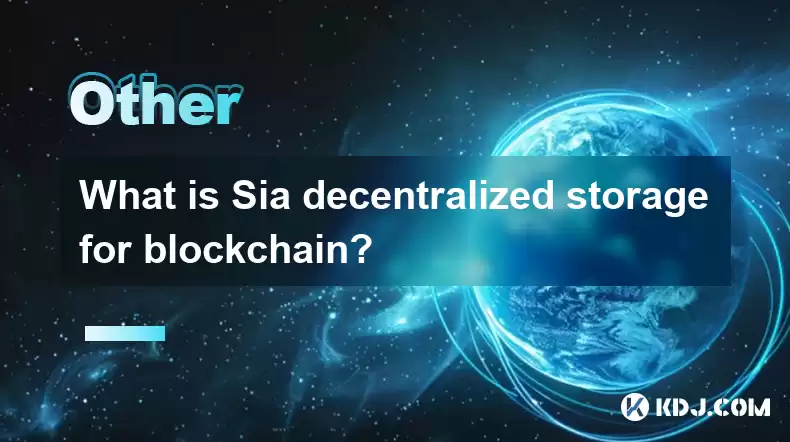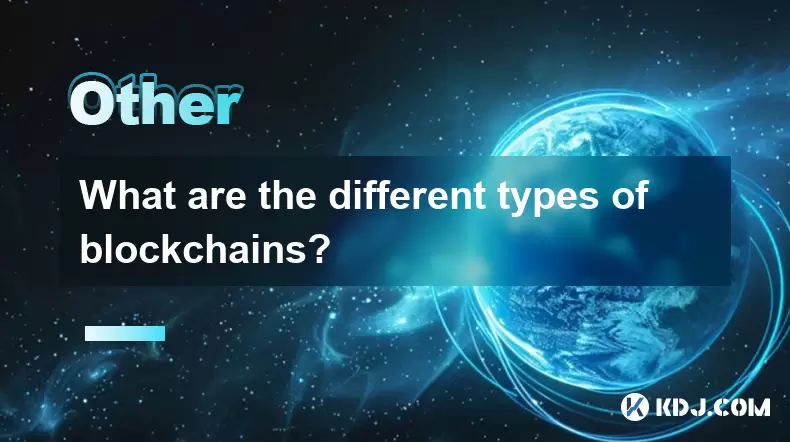-
 Bitcoin
Bitcoin $112400
-1.07% -
 Ethereum
Ethereum $3409
-3.27% -
 XRP
XRP $2.784
-6.60% -
 Tether USDt
Tether USDt $0.9997
-0.03% -
 BNB
BNB $739.3
-2.09% -
 Solana
Solana $158.0
-2.90% -
 USDC
USDC $0.9998
-0.02% -
 TRON
TRON $0.3213
-0.94% -
 Dogecoin
Dogecoin $0.1929
-5.01% -
 Cardano
Cardano $0.6974
-2.82% -
 Hyperliquid
Hyperliquid $36.69
-2.31% -
 Sui
Sui $3.327
-4.80% -
 Stellar
Stellar $0.3672
-5.18% -
 Chainlink
Chainlink $15.65
-3.07% -
 Bitcoin Cash
Bitcoin Cash $525.0
-1.68% -
 Hedera
Hedera $0.2291
-6.00% -
 Avalanche
Avalanche $20.91
-2.96% -
 Ethena USDe
Ethena USDe $1.000
0.00% -
 Toncoin
Toncoin $3.520
-1.12% -
 UNUS SED LEO
UNUS SED LEO $8.968
0.14% -
 Litecoin
Litecoin $105.7
0.26% -
 Shiba Inu
Shiba Inu $0.00001181
-1.79% -
 Polkadot
Polkadot $3.492
-2.08% -
 Uniswap
Uniswap $8.800
-3.10% -
 Dai
Dai $0.9999
-0.01% -
 Monero
Monero $289.9
-3.17% -
 Bitget Token
Bitget Token $4.243
-1.27% -
 Pepe
Pepe $0.00001006
-3.67% -
 Cronos
Cronos $0.1248
-5.68% -
 Aave
Aave $249.7
-2.50%
What is Sia decentralized storage for blockchain?
Sia uses blockchain and Siacoin for decentralized, secure, and private cloud storage, distributing encrypted data across hosts to enhance reliability and reduce costs.
Apr 16, 2025 at 07:50 am

Sia is a decentralized cloud storage platform that leverages blockchain technology to provide a secure and private way to store data. Unlike traditional centralized cloud storage services, Sia operates on a peer-to-peer network where users can rent storage space from hosts around the world. This decentralized approach not only enhances security and privacy but also reduces costs and increases reliability. In this article, we will explore the key features of Sia, how it works, its benefits, and how to use it.
What is Sia and How Does it Work?
Sia is built on a blockchain that records all transactions and contracts between users and hosts. The platform uses a native cryptocurrency called Siacoin (SC), which is used to pay for storage space. When a user wants to store data on Sia, they create a storage contract with one or more hosts. This contract is recorded on the Sia blockchain, ensuring that both parties adhere to the agreed terms.
The process of storing data on Sia involves several steps. First, the user's data is encrypted and split into multiple pieces using a technique called erasure coding. These pieces are then distributed across different hosts on the network. If a host fails to store the data or goes offline, the user can retrieve their data from other hosts that have the remaining pieces. This redundancy ensures that the data remains accessible and secure.
Key Features of Sia
One of the standout features of Sia is its decentralized nature. By distributing data across multiple hosts, Sia reduces the risk of data loss and censorship. This decentralized approach also means that there is no single point of failure, making the network more resilient to attacks and outages.
Another key feature is privacy. When users store data on Sia, their data is encrypted before it leaves their device. This means that hosts on the network cannot access the content of the data they are storing. Additionally, the use of multiple hosts and erasure coding further enhances privacy by making it difficult for any single host to reconstruct the original data.
Cost-effectiveness is also a significant advantage of Sia. Because hosts compete to offer storage space, prices are driven down, making Sia a more affordable option compared to traditional cloud storage services. Users can also choose hosts based on their performance and price, allowing for greater flexibility and control over their storage costs.
Benefits of Using Sia
Using Sia offers several benefits for users looking for a secure and private way to store their data. Enhanced security is one of the primary benefits. By distributing data across multiple hosts and using encryption, Sia ensures that data is protected from unauthorized access and tampering.
Increased reliability is another benefit. Traditional cloud storage services can be vulnerable to outages and data loss. Sia's decentralized network and use of erasure coding mean that data is more likely to remain accessible even if some hosts go offline.
Privacy is also a significant advantage. With Sia, users can store sensitive data without worrying about it being accessed by third parties. This makes Sia an ideal solution for businesses and individuals who need to protect their data from prying eyes.
How to Use Sia
Using Sia involves several steps, from setting up a wallet to uploading and managing your data. Here is a detailed guide on how to get started with Sia:
Download and Install the Sia Software: Start by downloading the Sia software from the official website. Follow the installation instructions to set up the software on your computer.
Set Up a Sia Wallet: Once the software is installed, you will need to set up a Sia wallet. This wallet will be used to store your Siacoin and manage your storage contracts. Follow the prompts in the software to create a new wallet and secure it with a strong password.
Fund Your Wallet: To use Sia, you will need to have Siacoin in your wallet. You can purchase Siacoin from a cryptocurrency exchange and transfer it to your Sia wallet. Make sure to follow the exchange's instructions for withdrawing Siacoin to an external wallet.
Upload Your Data: With your wallet funded, you can now upload your data to Sia. Open the Sia software and navigate to the upload section. Select the files you want to upload and choose the hosts you want to store your data with. The software will handle the encryption and distribution of your data across the selected hosts.
Manage Your Storage Contracts: After uploading your data, you will need to manage your storage contracts. The Sia software allows you to view and manage your contracts, including renewing them or switching to different hosts if needed. Make sure to keep an eye on your contracts to ensure that your data remains accessible and secure.
Security and Privacy on Sia
Security and privacy are at the core of Sia's design. Encryption is used to protect data from unauthorized access. When you upload data to Sia, it is encrypted on your device before being sent to the hosts. This means that even if a host were to access the data, they would not be able to read its contents.
Erasure coding further enhances security by splitting your data into multiple pieces and distributing them across different hosts. This means that even if some hosts go offline or fail to store your data, you can still retrieve it from the remaining hosts. This redundancy not only increases the reliability of the network but also makes it more difficult for any single host to reconstruct your data.
Blockchain technology is used to record all transactions and contracts on Sia. This ensures that all parties adhere to the agreed terms and provides a transparent and immutable record of all activities on the network. By using a blockchain, Sia ensures that the network remains secure and trustworthy.
Frequently Asked Questions
Q: Can I use Sia for storing large amounts of data?
A: Yes, Sia is designed to handle large amounts of data. The platform's use of erasure coding and multiple hosts allows for efficient and reliable storage of large files. However, you will need to ensure that you have enough Siacoin in your wallet to cover the costs of storing large amounts of data.
Q: How do I choose the right hosts for my data on Sia?
A: When choosing hosts on Sia, you can consider factors such as their performance, price, and reputation. The Sia software provides information on each host's performance and price, allowing you to make an informed decision. You can also choose to spread your data across multiple hosts to increase redundancy and reliability.
Q: Is it possible to recover my data if a host goes offline?
A: Yes, Sia's use of erasure coding allows you to recover your data even if some hosts go offline. The data is split into multiple pieces and distributed across different hosts, so you can retrieve it from the remaining hosts that have the necessary pieces. This redundancy ensures that your data remains accessible and secure.
Q: How can I ensure the privacy of my data on Sia?
A: To ensure the privacy of your data on Sia, make sure to encrypt your data before uploading it. The Sia software handles the encryption automatically, but you can also use additional encryption tools for added security. Additionally, choose hosts that have a good reputation and performance to minimize the risk of data breaches.
Disclaimer:info@kdj.com
The information provided is not trading advice. kdj.com does not assume any responsibility for any investments made based on the information provided in this article. Cryptocurrencies are highly volatile and it is highly recommended that you invest with caution after thorough research!
If you believe that the content used on this website infringes your copyright, please contact us immediately (info@kdj.com) and we will delete it promptly.
- BlockDAG, SEI, Ethena: Top Crypto Performers Under the Microscope
- 2025-08-03 10:50:16
- Bitcoin Blasts Past $119K: How Institutional Adoption and Macro Shifts Fuel the Fire
- 2025-08-03 10:55:16
- Crypto, Grok, and August: Decoding the Latest Trends and Insights
- 2025-08-03 11:10:16
- Crypto, Phishing, and Your Wallet: A New Yorker's Guide to Staying Safe
- 2025-08-03 10:30:16
- Troller Cat Meme Coin Presale Soars: A New King in the Crypto Jungle?
- 2025-08-03 10:30:16
- Grayscale, Altcoin Trust, and Mid-Cap Mania: What's the Deal?
- 2025-08-03 08:50:16
Related knowledge

What is the difference between on-chain and off-chain transactions?
Aug 02,2025 at 04:22pm
Understanding On-Chain TransactionsOn-chain transactions refer to digital asset transfers that are recorded directly on a blockchain ledger. These tra...

What is the double-spending problem and how does blockchain prevent it?
Aug 02,2025 at 01:07pm
Understanding the Double-Spending ProblemThe double-spending problem is a fundamental challenge in digital currency systems where the same digital tok...

What is the difference between a blockchain and a database?
Aug 01,2025 at 09:36pm
Understanding the Core Structure of a BlockchainA blockchain is a decentralized digital ledger that records data in a series of immutable blocks linke...

How does blockchain handle scalability?
Aug 02,2025 at 02:58pm
Understanding Blockchain Scalability ChallengesBlockchain scalability refers to a network's ability to handle an increasing volume of transactions wit...

What are the different types of blockchains?
Aug 03,2025 at 03:01am
Public Blockchains: Open and Decentralized NetworksPublic blockchains are the most widely recognized type of blockchain, characterized by their open a...

What is a hash in a blockchain?
Aug 02,2025 at 05:28am
Understanding the Concept of Hash in BlockchainA hash in the context of blockchain technology refers to a unique digital fingerprint generated by a cr...

What is the difference between on-chain and off-chain transactions?
Aug 02,2025 at 04:22pm
Understanding On-Chain TransactionsOn-chain transactions refer to digital asset transfers that are recorded directly on a blockchain ledger. These tra...

What is the double-spending problem and how does blockchain prevent it?
Aug 02,2025 at 01:07pm
Understanding the Double-Spending ProblemThe double-spending problem is a fundamental challenge in digital currency systems where the same digital tok...

What is the difference between a blockchain and a database?
Aug 01,2025 at 09:36pm
Understanding the Core Structure of a BlockchainA blockchain is a decentralized digital ledger that records data in a series of immutable blocks linke...

How does blockchain handle scalability?
Aug 02,2025 at 02:58pm
Understanding Blockchain Scalability ChallengesBlockchain scalability refers to a network's ability to handle an increasing volume of transactions wit...

What are the different types of blockchains?
Aug 03,2025 at 03:01am
Public Blockchains: Open and Decentralized NetworksPublic blockchains are the most widely recognized type of blockchain, characterized by their open a...

What is a hash in a blockchain?
Aug 02,2025 at 05:28am
Understanding the Concept of Hash in BlockchainA hash in the context of blockchain technology refers to a unique digital fingerprint generated by a cr...
See all articles

























































































